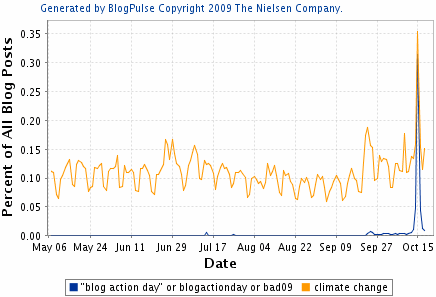IntMath Newsletter - Polar graphs, microphones, BAD stats, productive stress
By Murray Bourne, 20 Oct 2009
In this Newsletter:
1. Math tip (a) – Polar graphs and microphones
2. Math tip (b) – Real statistics - Blog Action Day
3. Math tip (c) – Productive stress
4. From the Math Blog
5. Final thought – Learning forever
1. Math tip (a) – Polar graphs and microphones
Students first learn about plotting points, lines and curves on the x- and y- graph system. This is also called the Cartesian coordinate system, after Rene Descartes, the 17th century French mathematician who developed it.
Did you know there is another system for plotting points and curves? The polar coordinate system dramatically simplifies the algebra for certain complicated graphs. And it has some interesting applications, including the recording pattern of microphones.
Go here to see the full article: Polar coordinates and cardioid microphones.
2. Math tip (b) – Real statistics - Blog Action Day
Oct 15th was Blog Action Day. The idea behind this is to get bloggers from all over the world to write about one topic and in so doing, make a positive change to the world. The topic this year was "Climate Change".
According to the official BAD site:
This year there were 13,375 blogs from 155 countries with more than 17 million readers.
It's interesting to check out the effect of Blog Action Day on the number of posts mentioning "climate change". The following graph is from the Nielsen group's BlogPulse [no longer available], where you can search for any term and see how many bloggers are writing about it.

BAD 09 statistics
The orange curve indicates posts mentioning "climate change". It shoots up on Oct 15th, but has already come back to normal a few days later.
This is the same as previous BADs. There is a spike in interest for the topic, sure, but then it drops off very rapidly. I'm left wondering what the outcome really is.
My own entry is here: Blog Action Day 09 – Climate Change.
3. Math tip (c) – Productive stress
I received a mail from Ika, who is a math teacher. He wrote:
I am a math teacher in Majalengka, a small city in Indonesia. Besides teaching regular classes, I also teach a "special" class with only 10 students, selected from the regular classes based on their ability and interest in math. It aims at preparing the students to face math competitions. Can you give me some ideas about how to motivate such students to work and learn very very hard without feeling stressed? Thank you.
I replied to Ika:
One suggestion is to give them skills so they can recognize and reduce their own stress. This includes an understanding of the difference between good, productive stress (called "eustress", see Wikipedia's entry), and debilitating stress (which gives us the feeling of "distress").
This classic diagram shows the stages of stress vs. performance. If we have no stress at all, there is no need to perform and we just don't care. As healthy stress levels rise, our performance increases and reaches a peak. If we (or our coach) push ourselves too much, we suffer from unproductive stress.

Stress and performance
Realistic goal setting, regular exercise, good sleep, regular breaks, breathing exercises and healthy food (especially fruit) are all things that will help them work at peak efficiency. Most teenagers really struggle with each of these issues, but if you can convince them that it will help their happiness, and their success, they are more likely to want to do it.
It's similar to training for an Olympic event. Teachers (and their students) can learn a lot from the way such training is carried out.
All the best helping your students to perform at their peak while staying calm, Ika!
4. From the Math Blog
a) Polar coordinates and cardioid microphones
Microphones are one of the many real-life applications of graphs in polar coordinates. [Already mentioned above.]
b) Blog Action Day 09 - Climate Change
There's only one realistic solution for climate change. [Already mentioned above.]
c) How to remember trigonometry ratios
There's more than one way to remember the sine, cosine and tangent ratios.
5. Final thought – Learning forever
A lot of people think that school is for learning, working days are for working and retirement is for resting. But actually, we learn far more in the first year of our first job than we do in all of college, and there are many people who are keen learners all throughout their retirement (like those of you who are subscribers of the IntMath Newsletter!).
This quote comes from the Mahatma Gandhi, the Indian leader who inspired his country to resist oppression using non-violent means.
Live as if you were to die tomorrow. Learn as if you were to live forever.
- Gandhi
Until next time, enjoy whatever you learn.
See the 2 Comments below.
